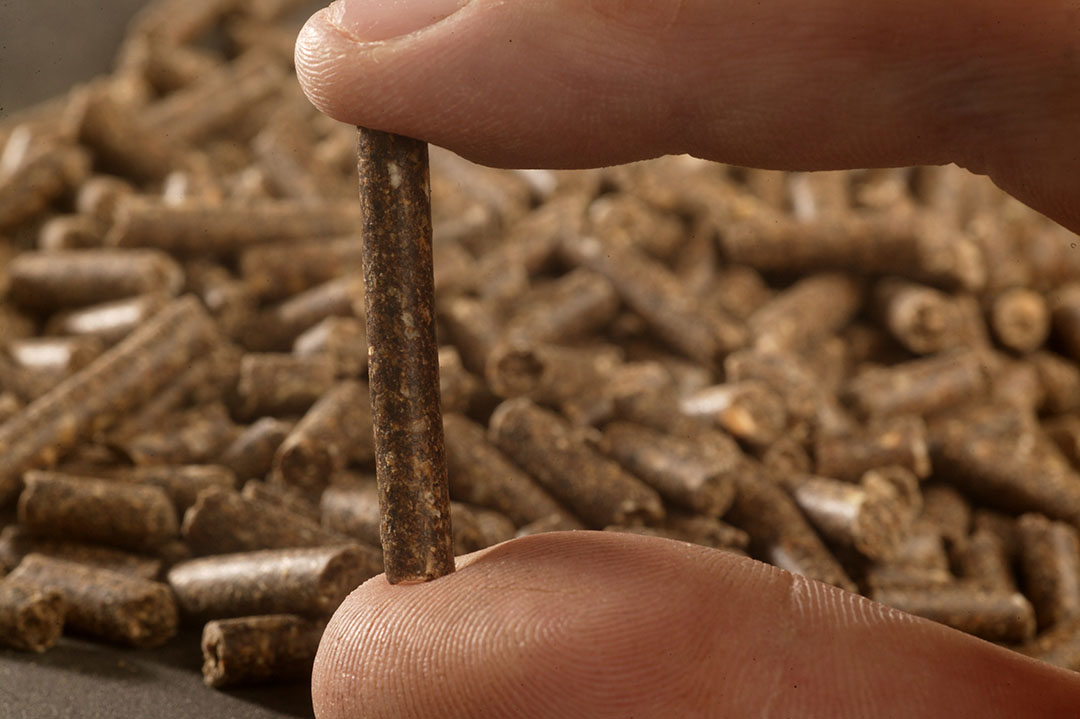Live yeast to withstand pelleting process

The pelleting process is challenging for certain feed additives, due to the high temperatures and the friction of the feed mass for example. A patented technology has solved this problem for live yeast.
All About Feed recently visited the production facilities of Lallemand in Poland, home to the production of premium protected live yeasts using the Titan technology. This technology protects live yeast against pressure, heat and moisture constraints that can be encountered in feed pelleting processes, as well as against chemical compounds. The demand for such technologies is growing as the inclusion of natural feed additives such as live yeast is increasing as well. Live yeasts (probiotics) can positively influence the animal’s digestive function and health. Including probiotics in the diet can help optimise rumen or gut function, enhance digestibility, protect against harmful microorganisms and support stronger natural defences. But they are sensitive and when used, they should stay alive to be able to do their work in the animal’s gut.
Upgrade of the Józefów plant
Lallemand Animal Nutrition has been producing feed additives for a long time (around 3 decades) and is considered one of the major players in the field of (live) yeasts and bacteria. The company recently announced that it is expanding the production capacity of its dedicated yeast production plant in Józefów, Poland. Major investments have been made to double both yeast drying and micro-encapsulation capacities, which will be completed at the end of 2019. Andrzej Pasicki, general manager of Lallemand Poland updated All About Feed on the production facilities he manages. “The history of the plant goes back to 1866, when the Przeworski brothers built the ‘Józefów” sugar plant’. Then from 1972, the plant was operated as the ‘Warsaw spirit and yeast plant’. In 2005 Lallemand acquired the yeast plants in Lublin and Krakow (both of which are closed now), and in 2006 the plant in Józefów. In 2011, we started the production of dried yeast Levucell SB and SC, and in 2016, we started with coated yeast.” Today, they are coating machines in Józefów (Poland) and in Passau (Germany). The current expansion plan is to double the drying and coating capacity of Josefow before end 2019 thanks to the construction of a new building including production equipment and warehouse. In total, Lallemand has a lot of production plants around the world, focused on producing yeast and/or bacteria (22 for yeast, 8 for bacteria). The plants in the US and UK produce bacteria used for animal nutrition. Yeast products for animal nutrition are produced in in 5 different plants across Europe, Canada and South Africa.

Specific coating technology
Vincent Couture, brand manager at Lallemand explained the Titan technology and some associated trials in more detail. “The feed manufacturing process comes with a lot of stress factors for feed additives. Think of pressure, moist and heat. This is why we developed a new protection technology. Titan is a specific yeast protection technology that protects the live yeast against the constraints of the feed production and ensures stability through storage. Titan includes a specific coating technology, but the technology is not only about coating, the yeast fermentation and drying steps were also optimised to ensure optimal yeast survival. It is a technical advancement that optimises Levucell® SB and SC viability after pelleting,” Mr Couture explained. The patented technology includes a ‘shell’ of inactive yeast (dead cells) around the core of the live yeast, plus a protective micro-encapsulation layer. Several trials have been done to test the performance of the unique coated yeast, where – under industrial pelleting conditions – Titan shows superior stability compared to non-encapsulated products and is the only heat resistant live yeast with an external coating.
Expected count numbers
The IFF (The International Research Association of Feed Technology / Internationale Forschungsgemeinschaft Futtermitteltechnik) in Germany executed a trial in which 5 live yeast product were compared regarding their thermo-resistance. The diet was a standard ruminant diet (composition available upon request). The pelleting conditions were a simple pelleting (ring-die press) with an output of 700 kg/hour. Pelleting temperatures were 65°C, 75°C and 85°C. “We saw that at 65°C, Titan and 2 other yeast sources were at the expected count (live yeast cell count). At 75°C, only one other yeast source still resists, but experiences a drop in CFUs. Titan remained perfectly stable. At 85°C, in this trial, only the Titan yeasts reached the expected level of lie cells in the feed. However, stability is not only about manufacturing constraints, it’s also about storage duration. After 3 months of storage, Titan still reaches the guaranteed level of CFU/g* at 3 different temperatures,” Mr Couture explained. He addresses that even though yeasts with non-coated-bead technology appeared sometimes “stable and alive”, right after pelleting, it seems that the yeast cells are strongly damaged and would die during standard storage durations. “It is important for feed manufactures to be sure that the live yeast is still there after pelleting, in order to sell a feed product that corresponds to the label specifications,” Mr Couture concludes.
**A colony-forming unit (CFU) is a unit used to estimate the number of viable microorganism cells in a sample).











